Copyright © 2015-2016 by Dick Locke. All Rights Reserved. Contact and Image Use Information Primary Dragonfly Page here. Regular fly pictures are here.


June 2016: Starting a dedicated page for Meadowhawk dragonflies!
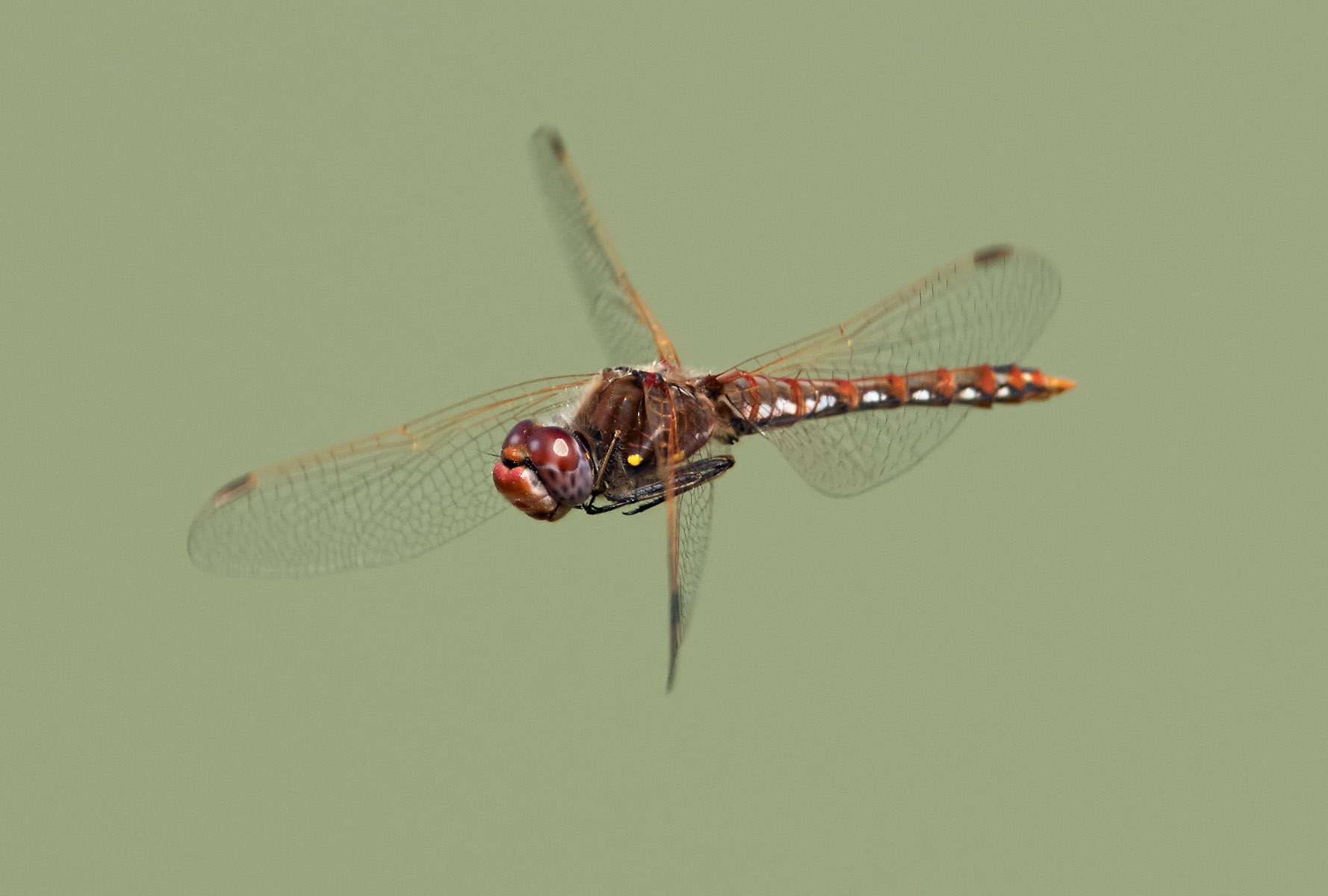
April 2015, near Wimberley TX. The wings move in an interesting pattern (see below). It's cool how the landing gear folds up tight to the body as Jo Anne noted. My friend Gil notes that variegated meadowhawks are ...a very common dragonfly in the western United States, reaching the eastern limits of its range in your area of Texas. It is one of the skimmers, which belong in the family Libellulidae, the largest family among the Odonata. My buddy Jonathan Neal has a nice July 2012 write-up on meadowhawks at this link; check it out.
Nikon D750 camera, Nikon Nikkor 300mm f2.8 VR lens with Nikon 1.7x teleconverter, 1/3200s, f7.1, ISO 800, monopod. The pond in the background made is relatively easy to continuously focus in the dynamic AF-C mode using 51 focus points. The lens & TC provide a 500mm focal length and really make this type of shot possible, or at least a lot easier... Can't easily get close enough and/or focus fast enough with my other macro lenses.
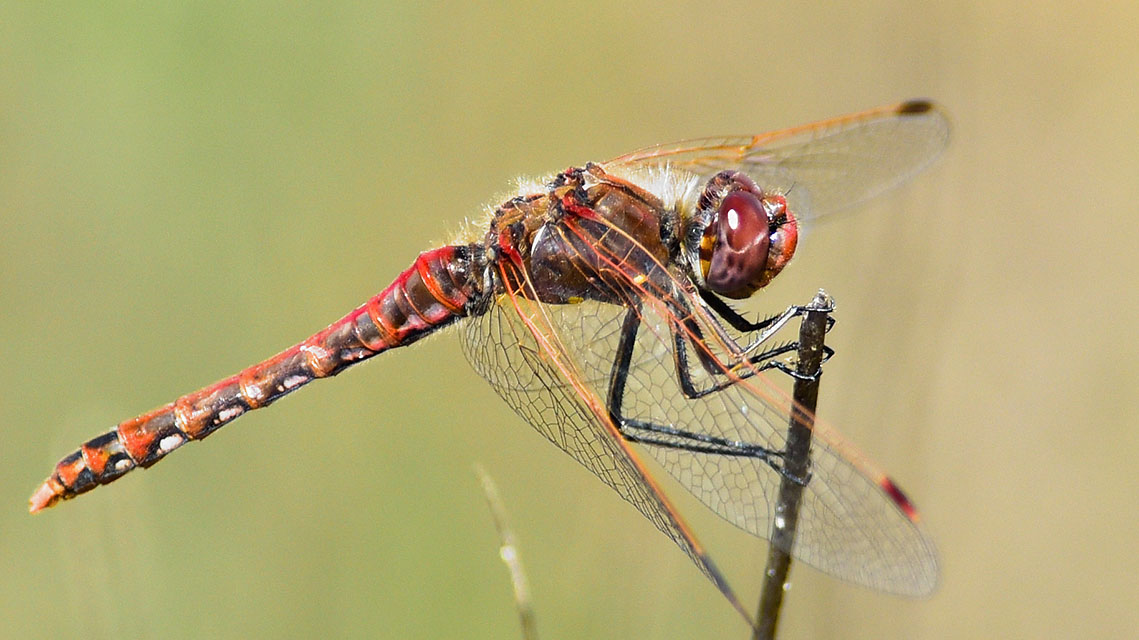
This one is with the Nikon D750 and 300mm f2.8 VR lens with a 1.7x teleconverter. Shot at 1/1250s, f6.3, ISO 400 matrix metered.
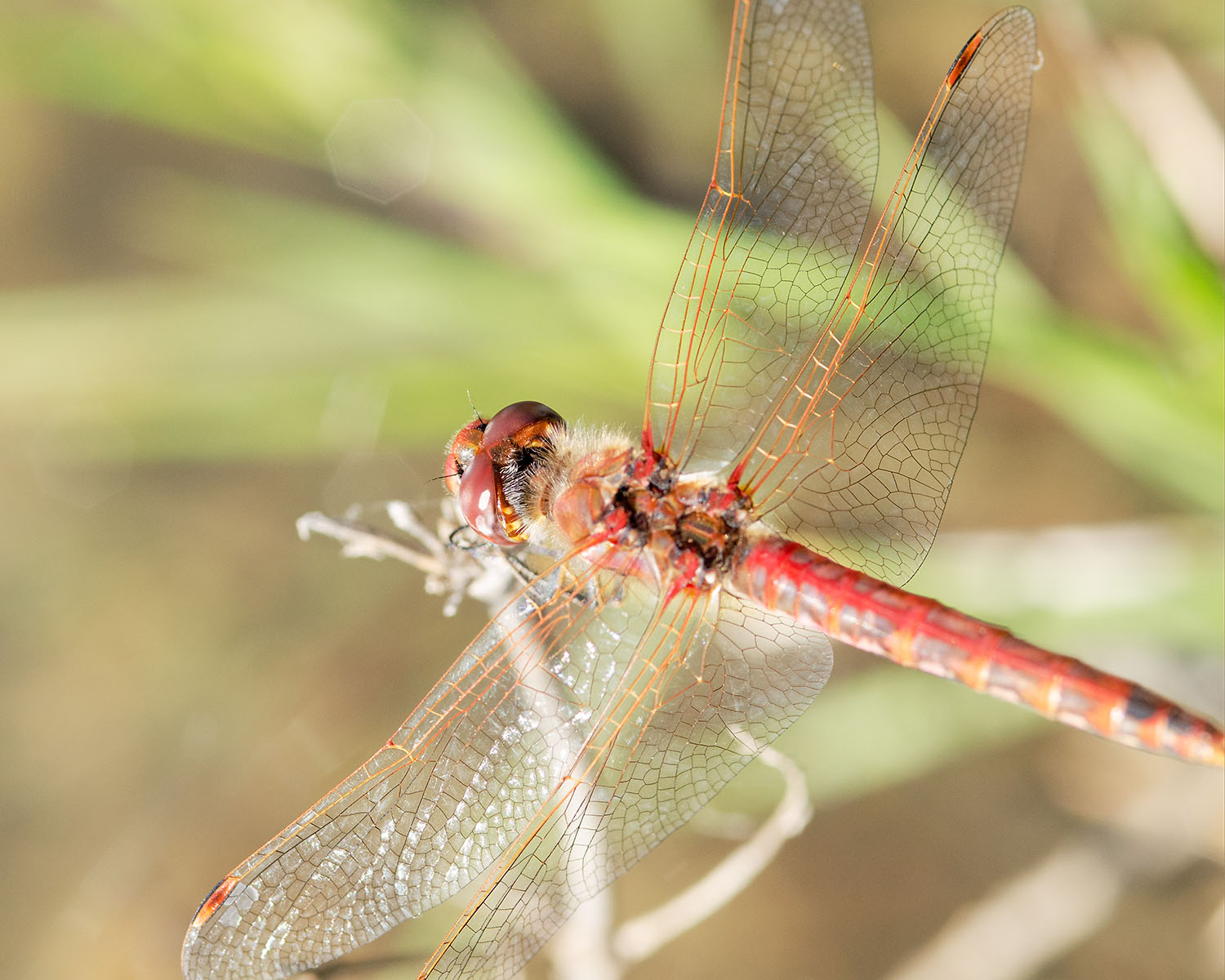
A Meadowhawk, genus Sympetrum. Gil suggests a Variegated meadowhawk. (If you have other thoughts on this ID please contact me!)
Many many thanks to Gil, again, who provides the following: I wouldn't bet the ranch on it, but I do believe your photo shows a newly maturing male Variegated meadowhawk, with its red face, orange anterior veins in the forewings, grayish abdomen with a red dorsal stripe and a series of white spots on the sides.
Nikon D7000 and Nikon 105mm f2.8D macro lens at f/11, 1/500s, ISO 800. [2012 comment: I haven't had the D7000 for too long and I've decided this plus the lens make an excellent close-up setup. Check out the detail and lack of grain in the wings and eyes. Also check out the close-up of the eye area just below.]
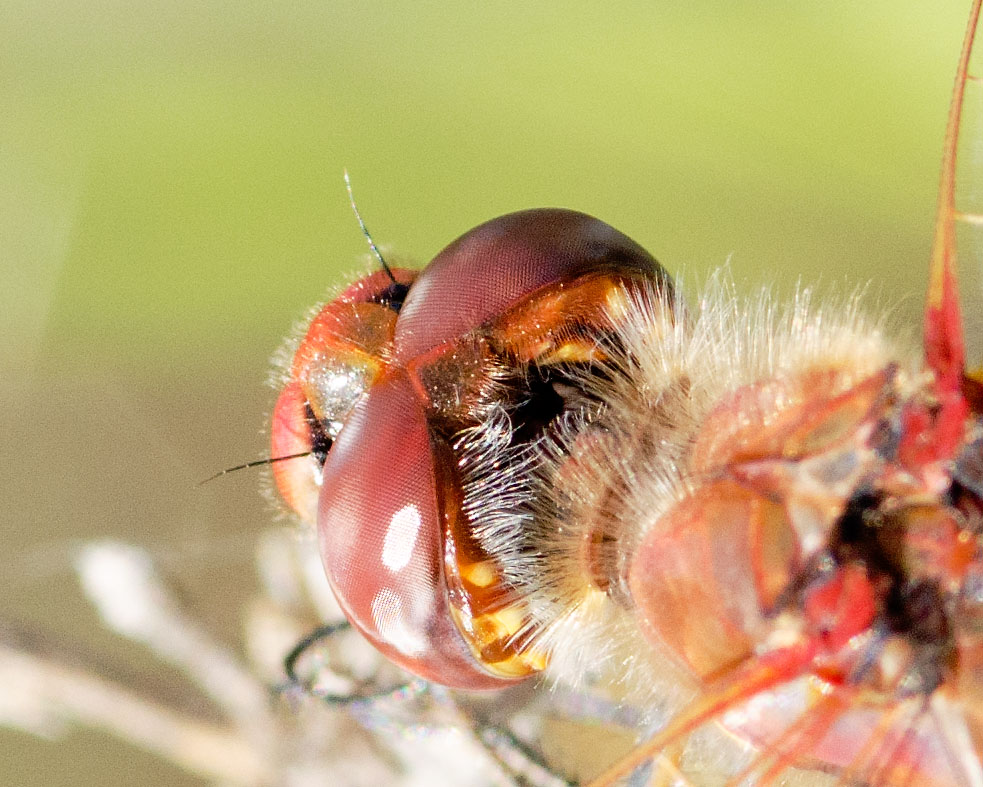
See above for info on this Meadowhawk dragonfly.
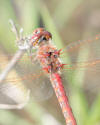
Above: a different photograph than the two Meadowhawk images above shows the detail where the wings connect up. This is a very interesting structure. It looks like there's a depression or gap from which the wings may have emerged. My entomologist friend notes the top of the thorax appears to be clear, and says: The wings are embedded in a flexible part of the cuticle consisting mostly of the protein resilin. Insect cuticle is clear unless it has pigments or structural colors.


Copyright © by Dick Locke. All Rights Reserved.
Contact and Image Use Information
Since June 2016 publication